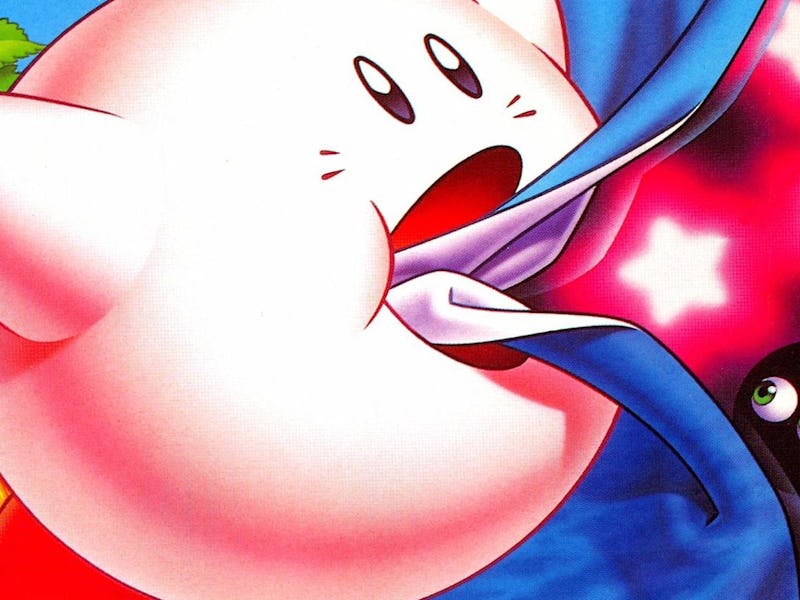You need to play the best Kirby game ever on Nintendo Switch ASAP
This game starring Nintendo's hungriest hero is worth playing, even all these years later.

Kirby was not supposed to be Kirby. Masahiro Sakurai was working for the Nintendo-owned HAL Laboratory in the early ‘90s, tasked with creating a game that could be an easy entry point for players of all skill levels. He focused on flying, which would give any player a fun physics advantage. But when it came to the actual character, he was in a hurry.
"I needed a dummy character to represent what the real character would be doing in the game," he told Eurogamer in 2003. "I just put a Kirby-shaped blob in my presentation as a place-holder, but everyone liked it so much we decided to keep it in the game without any major changes."
But after the initial Kirby game, the character still needed to develop more of a personality beyond being a cute little blob. The next game in the series, Kirby’s Adventure was where Kirby truly became Kirby. Because now, Kirby could eat enemies and take their powers.
This is the game that made Kirby a star.
If you’re a paid Nintendo Switch online subscriber, you can play Kirby’s Adventure. right now by downloading the Nintendo Entertainment System app.
The problem with the first game, Sakurai said in an official Japanese strategy guide for Kirby’s Adventure, was feedback from players that “it was too easy and too short.” In other words, he had succeeded too well at his given task. The question now became how to maintain an easy level of gameplay, while allowing for greater complexity and scaling up for more experienced players.
“For the sequel, I was thinking, how can I retain the easy parts, but make it so skilled players could have fun too? That was when the idea of copying enemy abilities came to me,” Sakurai says in the strategy guide interview.
Copying abilities truly makes the Kirby experience complete. Eating enemies through Kirby’s powerful mouth is fun enough, but there’s a sudden joy in suddenly being able to suddenly shoot out electric sparks or swing a sword.
Kirby displays a needle power.
The ability keeps gameplay unique in a way that other major side-scrolling Nintendo franchises don’t. Changes in Metroid, for example, are permanent and are needed to complete the game. Changes in Super Mario Bros. 3 are varied, but also clearly defined through dropped items. Kirby’s Adventure offers changes even more rapidly than Mario, while also allowing for an element of surprise. It’s okay if Kirby suddenly can’t fly on his parasol anymore because a new laser ability is moments away.
This feeling of discovery is a big part of what keeps Kirby’s Adventure feeling fresh. New abilities allow for varieties of gameplay: a player using a fire chain, for example, will have a ranged attack that’s perfect for out-of-reach enemies. A player using the defensive needle, where Kirby goes punk with spikes jutting out of his body, can up to an enemy and time the spikes just right.
Another aspect that makes Adventure worth playing today is its candy-coated backgrounds. Takashi Saitou, a designer for the game speaking alongside Sakurai in the strategy guide, said that a goal in level-making was making “stage backgrounds that would be pretty enough just to look at on their own.” That’s true of levels like Orange Ocean, which feels like a perpetual sunset, the pleasant vistas of Ice Cream Island, and the drenched-in-purple Fountain of Dreams at the end.
Fly through majestic vistas as Kirby.
Kirby’s Adventure has some challenging moments, but it certainly doesn’t compare to games like SMB3 or Zelda II in terms of difficulty. The game’s enemies are varied, including very cute mushrooms whose tops fly off. The game also makes the debut of Kirby standbys like Meta Knight. Ultimately, the most intriguing part of Kirby’s Adventure is the level of interactivity players experience with their enemies: they’re not just trying to defeat them, but rather figure out how they could be useful.
At this point, Kirby’s Adventure could be a perfect introduction to someone unfamiliar with NES-style games. One of the last major games on the NES system, which was discontinued in 1995, it offers a gorgeous showcase of everything possible in pixel art while lacking in some of the brute struggles of other “Nintendo hard” games. It’s easy to see why a little blob found its way into the hearts of players of all ages.
This article was originally published on